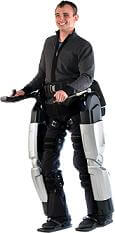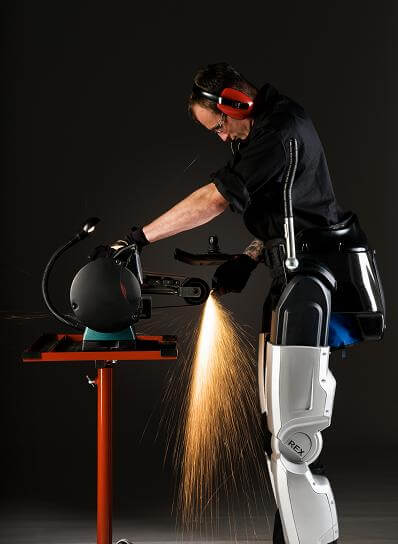
The Kiwis may have won the race for robotic legs. July 14th saw New Zealand’s Rex Bionics launch the Rex system, a set of powered limbs that allow a paraplegic to walk again. Designed to be used in place of wheelchairs, the legs aren’t prosthetics but rather an exoskeleton that lifts and moves a patient. Users control it via two joysticks, and the machine walks under its own power. With it, paraplegics will be able to stand up straight, walk, and even climb stairs. According to Rex Bionics, the machine is currently available in New Zealand and will be coming to other countries in 2011. This likely makes it the first system of its kind to be commercially available. Unfortunately, while many of the wheelchair bound may be interested in the walking platform, the hefty price tag of around $150,000 (USD) will make it inaccessible to most. Singularity Hub applauds Rex Bionics for helping paraplegics walk again, but honestly we expect better. This system needs to be much cheaper and faster. It seems like they intentionally avoid showing how slow Rex moves in their two demo videos (check them out below).
Earlier in the year we saw renewed interest in another walking platform for paraplegics, the ReWalk from Argo Medical Technologies. The ReWalk is supposed to launch sometime this year, but it looks like Rex Bionics got out of the gate first. Without seeing the final version of the ReWalk it’s hard to fairly compare the two systems, but my intuition is that while the Rex is available first it’s not the better option. Watch these videos and you’ll see why: Rex looks big and slow.
Actually, this second video is remarkably similar to the first, except that Hayden Allen, the user, has shaved. If you’re a beard lover, feel free to skip.
Rex weighs about 38 kg (~84 lbs) and seems rather bulky. Not only that, but it looks slow. Really slow. Here’s a video of the ReWalk for comparison:
Neither system lets you sprint, but it does seem like the ReWalk is faster. It also requires arm supports, however, so maybe there’s a trade-off here such that some will prefer the Rex. There’s also battery life to consider: Rex Bionics says that their walker can stay active on one battery for 2 hours, and that swapping batteries to keep going is easily down. Arco claims the ReWalk stays charged for an entire day’s worth of walking. I’m skeptical of that claim, and with the ReWalk as yet unavailable, it’s hard to know if it will outlast the Rex.
Of course the biggest difference, to me, is that the Rex costs more than a Tesla Roadster. Arco hasn’t priced the ReWalk, but it’s got to be less than that, right? I mean, Cyberdyne’s HAL exoskeleton is only supposed to be around $20k. I just can’t see someone taking out a mortgage to pay for the Rex, no matter how cool it looks or quickly it gets to market. Also, it seems to me that zipping around in a featherlight wheelchair is infinitely preferable to plodding along at Rex’s slow speed. But then again, I’m not a paraplegic, so what do I know. If any of our readers in NZ (we have a few actually) end up getting a Rex, please drop us a line. I’d love to hear your thoughts on the platform. If it was me though, I think I’d wait until KAIST commercialized its robot walker. Nothing beats looking like you just stepped off the set of Star Wars.

[image credit: Rex Bionics]
[source: Rex Bionics site and Facebook page]



